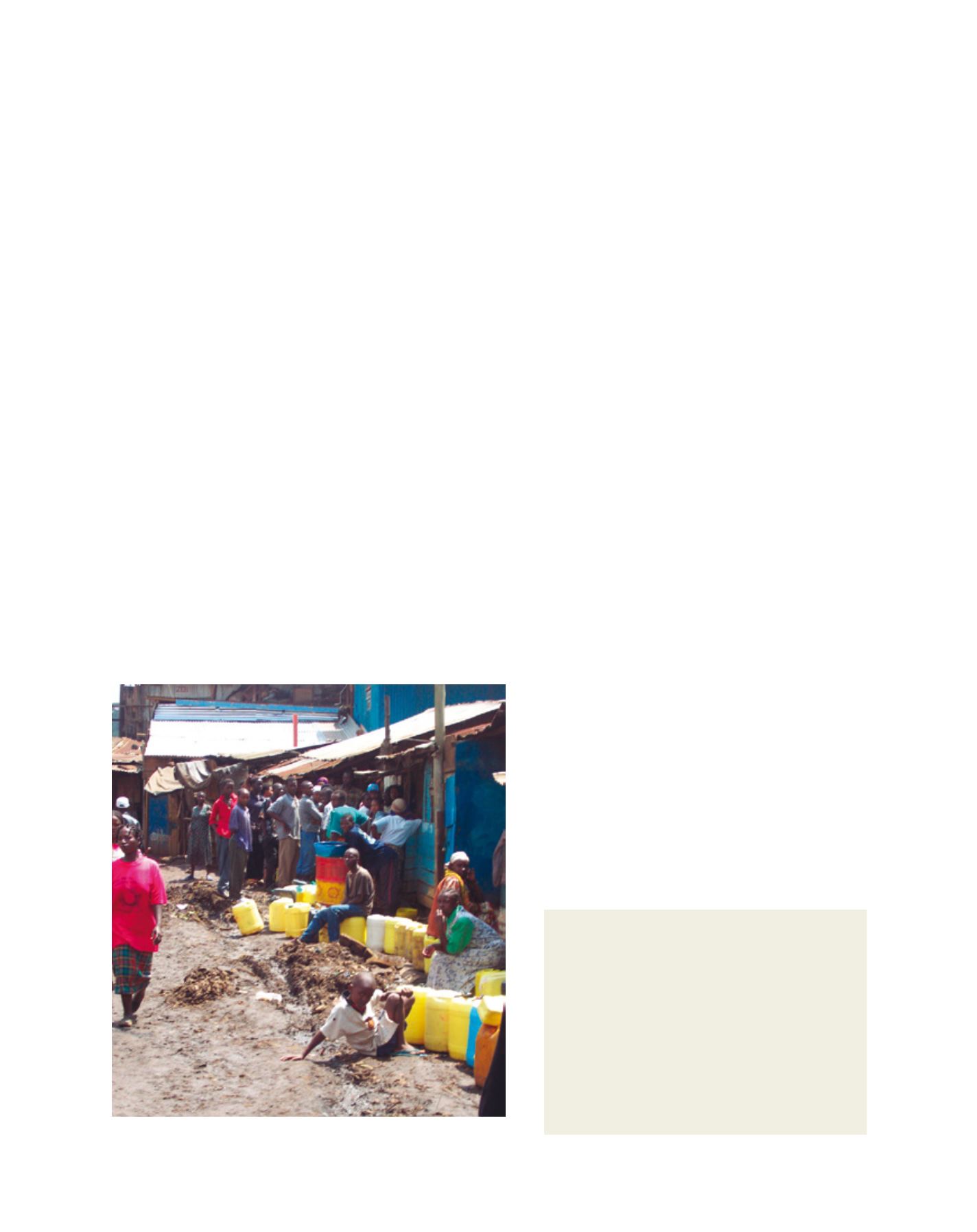

[
] 323
I
nternational
C
ooperation
on
W
ater
S
ciences
and
R
esearch
prints for the representation of processes including change
and will focus on advanced monitoring and data analysis
techniques. An interdisciplinary path will be sought by
bridging with socio-economic sciences and geosciences
in general.
Panta Rhei fits well within the much broader ‘Future
Earth’ initiative. This major ten-year programme started
in 2013 and brings together natural and social sciences
through cooperation between the International Council
for Science (ICSU), the International Social Sciences
Council (ISSC) and the Belmont Forum, along with
several other major international organizations including
UNESCO. As water is a key element underpinning sustain-
ability for society, seeking the connection and synthesizing
the research findings from the two initiatives will provide a
unique opportunity to promote interdisciplinarity.
Panta Rhei: three clear objectives
Understanding.
This has always been the essence of
hydrology as a science. Improving our knowledge of
hydrological systems and their responses to changing
environmental (including anthropomorphic) condi-
tions, and in particular variability and indeterminacy,
is a key step in deciphering change and the interac-
tion with society. Special attention is to be devoted
to complex systems like mountain areas, urban areas,
alluvial fans, deltas, intensive agricultural areas, and to
the specification of new measurement and data analysis
techniques, which will allow the development of new
understanding of coevolution processes.
Estimation and prediction.
This is closely related to
understanding, and it is the essence of hydrologic engi-
neering and hydrological applications, embracing flood
risk mitigation and water resources management. This
objective includes estimation of design variables under
change and uncertainty assessment that is a crucial step
to support risk evaluation.
Science in practice
. This signifies that Panta Rhei aims
to include humans in the study of hydrological systems
and therefore aims to achieve an iterative exchange
between science, technology and society. Science in
practice is science for people. It is, therefore, relevant to
science (both fundamental and applied) and relevant to
water technology. It includes policymaking and imple-
ment practices. In the past decade (2003-2012), IAHS has focused
its research on Prediction in Ungauged Basins (PUB), developing
models to better predict availability of water in diverse climatic and
economic circumstances and water-use settings, and to better fore-
cast and predict floods and droughts in basins and regions in which
there has been little or inadequate data on which to base models.
The PUB decade has resulted in three major publications:
Runoff
Prediction in Ungauged Basins – Synthesis across Processes, Places
and Scales,
published by Cambridge University Press; a summary
article in the
Hydrological Sciences Journal
‘A decade of Predictions
in Ungauged Basins (PUB) – a review’; and
Putting PUB into Practice
(in press as of April 2013). These publications combine advancing
the predictive capability and fundamental understanding of hydro-
logical processes with making the findings relevant to the needs
of societies in basins of all scales. The PUB initiative has brought
together scientists, practitioners and policy makers from around
the world and from many organizations, including UNESCO, in a
cooperative effort.
Currently, IAHS is developing a new scientific decade for 2013-2022,
entitled ‘Panta Rhei – Everything Flows’. The initiative is dedicated to
research activities on change in hydrology and society. The purpose
of Panta Rhei is to reach an improved interpretation of the processes
governing the water cycle by focusing on their shifting dynamics in
connection with rapidly changing human systems. The practical aim
is to improve our capability to make predictions of water resources
dynamics to support sustainable societal development in a changing
environment. The concept implies a focus on hydrological systems as a
changing interface between environment and society, whose dynamics
are essential for determining water security, human safety and devel-
opment, and for setting priorities for environmental management. The
scientific decade 2013-2022 will devise innovative theoretical blue-
Hydrology and water security
As defined by UNESCO (1964), hydrology is the science
that deals with the waters of the Earth; their occurrence,
circulation and distribution on the planet; their physical
and chemical properties; and their interactions with
the physical and biological environment, including their
responses to human activity.
Water security is defined as the capacity of a
population to safeguard sustainable access to adequate
quantities of acceptable quality water for sustaining
livelihoods, human well-being, and socio-economic
development; for ensuring protection against water-borne
pollution and water-related disasters; and for preserving
ecosystems in a climate of peace and political stability.
Drinking water supply in Kibera, Nairobi, Kenya
Image: G. Young


















